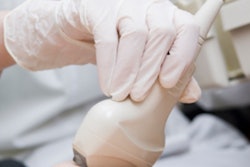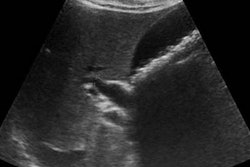
Radiologists would like more support from the American College of Radiology (ACR) for point-of-care ultrasound, according to an analysis of data from the ACR's 2017 workforce survey published December 19 in the Journal of the American College of Radiology.
Why is point-of-care ultrasound such a concern? Because it's complicated, according to co-authors Dr. Jay Harolds of Michigan State University in Grand Rapids and Dr. Edward Bluth of the Ochsner Clinic Foundation in New Orleans.
"[Point-of-care ultrasound] is complex -- potentially involving educational and reimbursement issues, standard setting, leadership development, marketing, and lobbying -- and does not have an easy solution," they wrote. "The ACR's study of this problem and development of a recommended comprehensive strategy ... would be of value."
This year, the ACR's workforce survey asked about areas in which Practice of Radiology Environment Database (PRED) group leaders would like more help. The survey was conducted between January and March. Out of 1,800 group leaders, 477 responded, for a response rate of 26%.
In response to the question about what areas survey participants would like additional help with from ACR leadership, 52% identified point-of-care ultrasound as a "somewhat high" to "high" priority, Harolds and Bluth wrote. Turf issues were the second most important issue to survey respondents, and the development of a patient satisfaction survey was the third.
| Areas where radiologists want support from the ACR | |
| Issue | Somewhat high to high priority |
| Point-of-care ultrasound | 52% |
| Turf issues | 36% |
| Development of a patient satisfaction survey | 28% |
| Development of a referring physician satisfaction survey | 22% |
| Documenting non-relative value unit (RVU) added-value activities | 14% |
The researchers also found that the majority of participants (67%) were satisfied with their involvement in managing allied health professionals. However, almost a third (28%) were dissatisfied or very dissatisfied with their level of involvement in the management of radiology IT activities.
"A potential cause of this dissatisfaction is highlighted by the survey result showing that only 29% of radiology IT resources report directly to radiology leaders compared to 49% that report to institutional IT departments," they wrote.
When asked about their influence within their own institution, 26% of survey respondents said they believe it has decreased, Harolds and Bluth noted.
"The fact that more than one-quarter of responding radiology department leaders feel their influence is diminishing is concerning and should be carefully monitored to determine if this is a developing trend," they wrote. "Perhaps the use of ACR resources such as the Radiology Leadership Institute should be further emphasized and made more easily available."



















